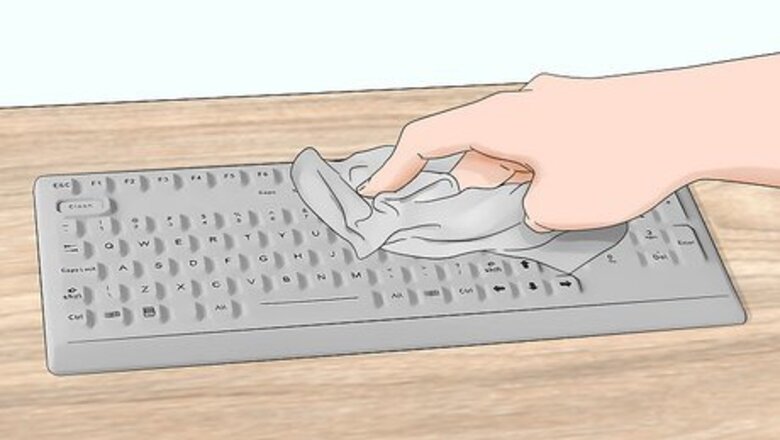
views
Deep Cleaning
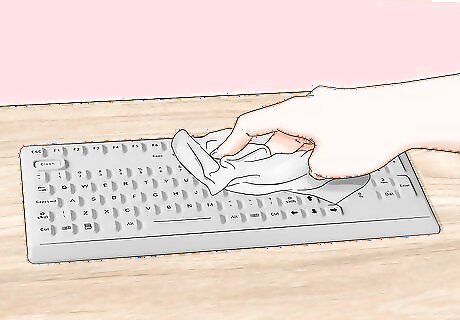
Run a duster over the surface to pick up surface dirt. Use a feather duster or a soft lint-free cloth without any spray or cleaning chemicals. Gently wipe the rubber’s surface with your duster to pick up any loose particles that are stuck to it. Pay close attention to any cracks or crevices where dirt may gather. Dusters work well on any small piece of rubber, such as on keyboards or appliances.
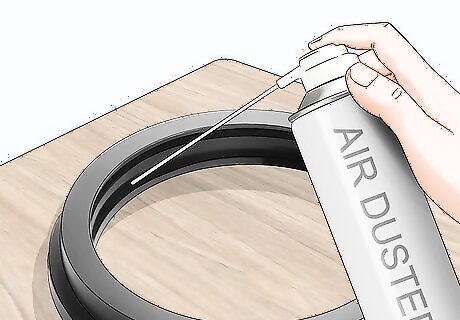
Spray compressed air to clear dust in hard-to-reach spots. Pick up a can of compressed air from your local convenience or office supply store. Hold the can upright and aim the nozzle at the piece you’re cleaning. Press the button down in short bursts until you don’t see any more dust left on the surface. Compressed air works best for cleaning rubber gaskets, seals, and keyboards. Avoid holding the can of compressed air upside-down since it could cause liquid to spill out.
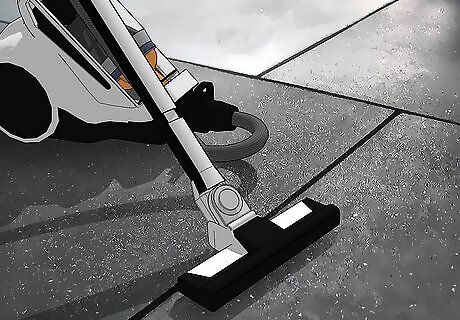
Vacuum the rubber to remove the most dirt and dust. Turn your vacuum to the medium setting and use a rolling beater-brush attachment if you have one. Run the vacuum over the surface a few times to pick up all of the dirt that’s still stuck on the rubber. Sweeping doesn’t work very well on rubber floors since the dirt and residue might stick to it. Avoid using a canister vacuum where the head drags on the floor since it could leave marks and cause wear and tear.
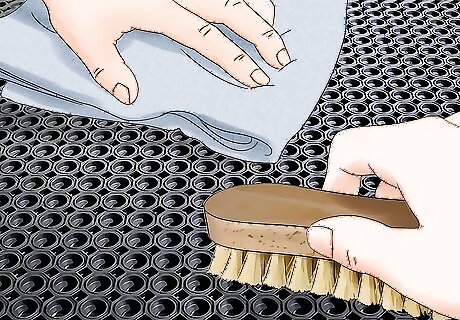
Stick to dry cleaning methods for any antique or vintage rubber. If the rubber is old or damaged, water could make it worse if you clean with it. If you’re not sure about the age of the rubber or if it’s safe to get wet, only use a duster, soft brush, or vacuum when you’re cleaning.
Light Cleaning with Soap and Water
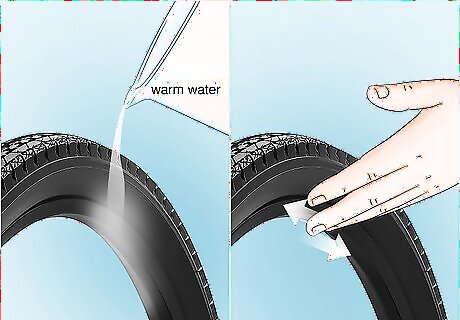
Try using only water at first. If you’re working with old rubber, like on classic bike or car tires, cleaners could be too abrasive. Rinse the piece of rubber with warm water and work it gently onto the surface by hand rather than using a brush since you could damage the rubber and cause it to deteriorate. Alternatively, you can use a mixture of vinegar and water. Mix half a cup of vinegar per gallon of water to prepare the mixture.
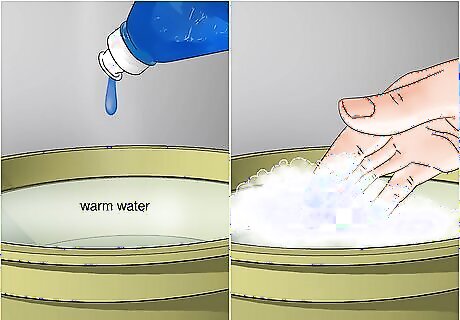
Mix liquid dish soap or laundry detergent with warm water. You’ll need enough water to either wipe the entire surface or submerge the piece completely. Fill a container with water and add a squirt of any type of liquid dish soap or dish detergent. Stir the soap into the water thoroughly until it starts to form a thin layer of suds.
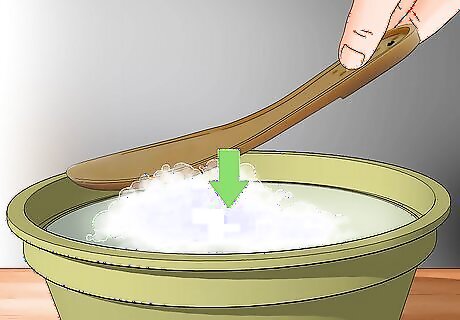
Soak the rubber for about 15 minutes in the water if possible. Set the rubber in the soapy water so it’s completely submerged. Let the soap loosen any stains or residue that are still on the surface so they’re easier to scrub off later on. This works especially well for cleaning rubber soles on shoes and rubber bath toys. If you can’t submerge the piece of rubber, gently wipe the soapy water onto the surface with a lint-free cloth.
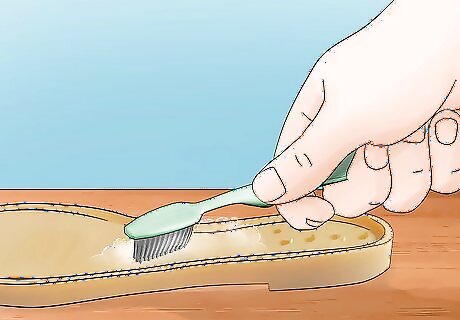
Brush the rubber with a microfiber cloth or soft-bristle brush. Gently work the soapy solution into the rubber using a dedicated cleaning brush or an old toothbrush. Focus on any areas that still have stains or residue caked on the rubber’s surface. Work the bristles into any nooks and crannies to ensure you get all of the dirt. This works well for rubber car mats, camper tops, or shoe soles. If you’re cleaning a rubber floor, use a soft sponge mop to scrub the surface.
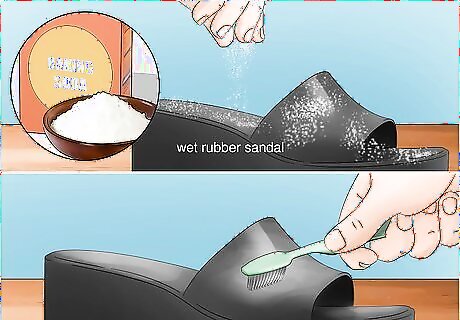
Scrub baking soda into the rubber to lift stains and remove odors. While the piece of rubber is still wet, sprinkle a thin layer of baking soda onto the surface and leave it to dry for 5 minutes. Then, use your cleaning brush or an old toothbrush to scrub the baking soda off of the rubber. If there were any stains or odors, they should be less noticeable! Baking soda works really well for rubber sandals.
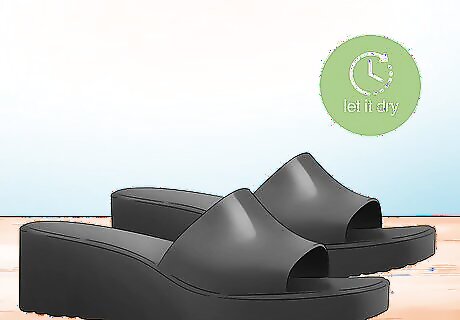
Let the rubber dry completely. If water was able to get inside the piece of rubber, squeeze out as much as you can. Set the piece in a cool, dry area that gets a lot of air flow so the water evaporates and doesn’t cause any mold or mildew to form. If you need to speed up the drying process, try placing the rubber in front of a fan or AC vent. For example, if you were cleaning rubber floor mats, let them dry out completely before putting them back in your vehicle.
Deep Cleaning
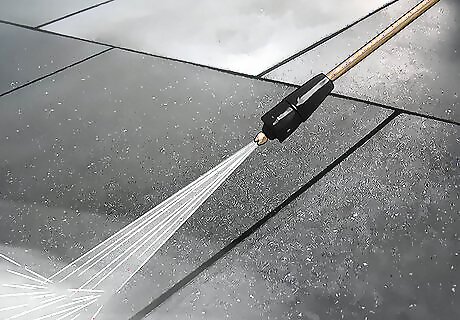
Spray the rubber with a hose or pressure washer to break apart gunk. Turn your hose onto a medium or strong setting and spray your piece of rubber with water. Try to remove as much of the loose dirt and dust particles as you can. If you don’t have a hose at home, go to a self-service car wash and see if they have a pressure washer available to use.
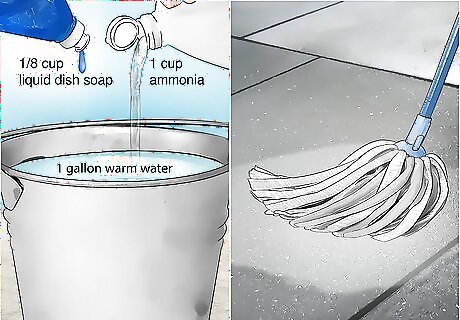
Scrub an ammonia solution on the rubber to lift up dirt and grime. In a large bucket, add 1 gallon (3.8 L) of warm water, ⁄8 cup (30 ml) of liquid dish soap, and 1 cup (240 ml) of ammonia and mix it together. Use a mop or a scrub brush to apply your cleaner to the rubber and leave it to sit for 10 minutes. After that, scrub the rubber with a soft-bristle brush to lift up any stains or grime. Finish off by rinsing the rubber with clean water. Test the cleaning solution on a small portion of the rubber before using it. If the area appears chalky after a few minutes, the cleaner may be breaking the rubber down. Add more water to dilute it before trying again. Alternatively, you can use an all-purpose cleaner and the Bar Keepers Friend. Spray small puddles of all-purpose cleaner and sprinkle Bar Keepers Friend. Then scrub with a brush in a circular motion.
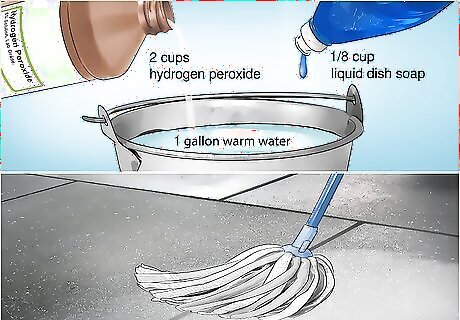
Apply a hydrogen peroxide solution to brighten stains. Combine 1 gallon (3.8 L) of warm water, ⁄8 cup (30 ml) of liquid dish soap, and 2 cups (470 ml) of hydrogen peroxide. Spread the solution over the rubber’s surface with a mop or cloth and leave it to soak for 10 minutes. Work the cleaner into the surface with a soft-bristled brush before rinsing away the stains and residue. If you want to lighten the rubber even more or if it wasn’t effective, try applying the cleaner a second time.
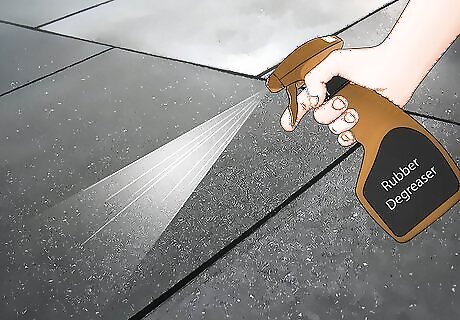
Use a commercial degreaser for stubborn residue. Get a commercial rubber degreaser from an automotive supply store and spray it generously on the pieces of rubber you’re cleaning. Let the degreaser sit on the rubber for a few minutes before scrubbing it gently with a stiff-bristled brush. Rinse the rubber off with clean water from a hose or pressure washer to remove any leftover residue. This method works well for rubber vehicle mats.
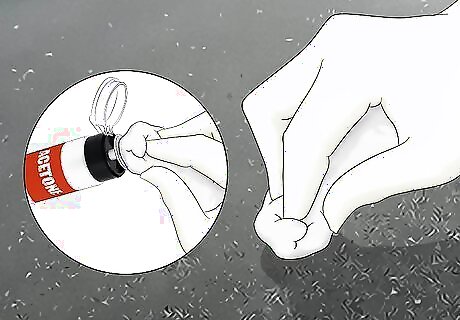
Remove sticky residue by applying acetone. Dip the corner of a lint-free cloth in a little bit of acetone and gently work it into the surface. Coat the entire area that feels sticky to the touch and carefully wipe the residue away with the cloth. The acetone will evaporate right off of the rubber so it will dry on its own pretty fast. Acetone is very flammable and may cause eye irritation, so be cautious when you use it. Use acetone on things like rubber phone cases or shoe soles.
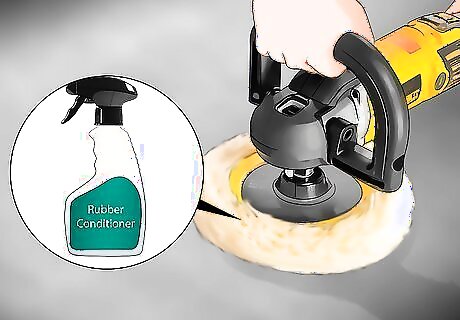
Buff with a rubber conditioner to make it shine. Look for a high-quality rubber conditioner or lubricant at your local big box store. You can buff by hand or use a buffing machine if the piece of rubber is large enough. Apply the conditioner to the buffing pad and work it into the piece of rubber to keep it shiny and in good condition. If you use a buffing machine, make sure it runs at less than 350 RPM, or else it could damage rubber floors. If you don’t have a rubber conditioner, mix 1 cup (240 ml) of fabric softener with 1 gallon (3.8 L) of water.




















Comments
0 comment